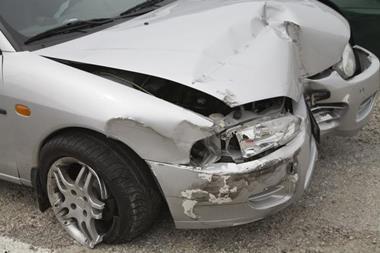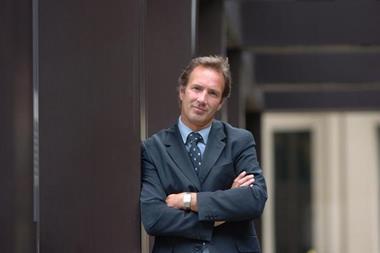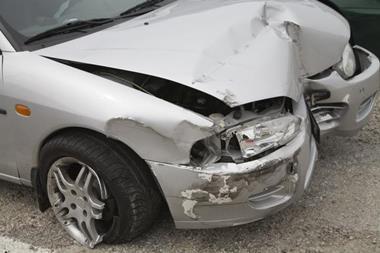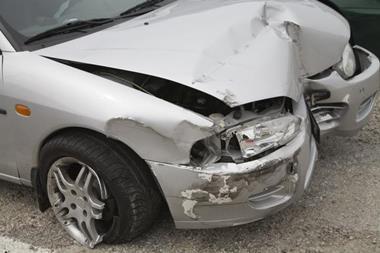The fuse is lit for an explosion in fraudulent employers’ and public liability claims as scammers get organised and the recession leads to more employee grievances. But will new efforts to crack down on the problem be enough to snuff the scams out?
The explosion of bodily injury motor claims over the past two years has sent shockwaves around the insurance industry. And insurers are haemorrhaging cash, as the most recent sets of company results has graphically illustrated.
But, while motor scams remain the biggest single source of fraudulent claims, concerns are crystallising about liability fraud across the industry. Many fear that it is the next claims time bomb waiting to go off.
Recently published ABI statistics have fuelled concern about employer and public liability (EL and PL) fraud. The association’s annual fraud snapshot showed that 8,550 fraudulent liability claims were detected last year, worth £223.5m.
This figure is a sizeable jump from 2008, when the ABI reported that 4,774 liability claims had generated £194m worth of detected fraud, outstripping the 14% across-the-board increase in proven suspicious claims. Five years ago, the ABI stated that liability fraud was worth £115m, meaning the total has nearly doubled.
But perhaps most worryingly for insurers is that this year’s figure represents nearly 9% of all liability claims by value, and 4% by volume – a higher ratio than for both motor and property.
Allianz is so concerned by the increase in liability fraud that it has recently established a dedicated, eight-strong casualty claims validation team, led by a head office fraud controller. The insurer set up the new team after it spotted an upsurge in suspect employers’ liability claims from known staged accident motor fraud hotspots.
Allianz fraud manager Mihir Pandya explains how the scam works. “We are convinced that a number of gangs are now placing members within companies, often through agencies on a contract basis, specifically to commit employers’ liability fraud,” he says. “There can be a tangled web of people involved in such crimes – faked workplace accidents may involve accomplices as ‘witnesses’. More often than not, the same professional outfits representing claimants in ‘crash for cash’ scams are now representing more and more claimants in EL claims.”
Cunningham Lindsey complex technical services director Cath Williams agrees with Pandya that organised fraudsters are targeting liabilities claims. Commenting on Allianz’s move, Williams says: “They are right to be worried. We are seeing referrals coming through at a much higher rate and we are now seeing connections to other crimes; it’s a more organised activity.”
Keoghs director of counter-fraud strategy James Heath says that another factor is the recent success of the Insurance Fraud Bureau-led crackdown on suspicious motor claims. The break-up of motor fraud rings has diverted fraudsters’ attention to EL and PL. “They are being squeezed into other areas where the risk of being caught is less,” he says.
Reflecting a greater industrywide focus on liability fraud, both Cunningham Lindsey and Keoghs have recently set up specialist, dedicated teams to tackle the issue.
Pandya’s new team has only been up and running for a few months. But already, he says, it has increased Allianz’s detection of fraudulent EL and PL claims by 65%, saving the company an estimated £10m this year alone.
Employers’ and public liabilities now account for more than 30% of Allianz’s total fraud savings for the current year, more than either motor or property. And Pandya believes that proportion is set to rise to more than half next year, thanks to the team’s work.
Allianz’s experience tallies with that of Keoghs, which has seen a 154% increase in liability fraud instructions from insurer clients over the last 12 months. The increases in EL (152%) and PL (158%) fraud instructions mirror one another. Heath believes the figures reflect a rise in suspicious liability claims across the board.
Fizzing resentment
There are two main factors behind this increase, says Heath. To some extent, insurers are becoming better at finding fraud. “A lot of insurers are putting a heck of a lot of resources into this area,” he says, adding that insurers are applying the lessons used in the crackdown on motor fraud. “They can now divert resources into other liabilities.”
Tools and processes developed for tackling suspicious motor claims are being deployed across all lines of business, uncovering more fraud. Crawford global counter-fraud solutions vice-president Bobby Gracey believes that the increase partly reflects a greater industry awareness of fraud. “The reality is that loss adjusters and insurers have always dealt with fraud, but it’s becoming an industry now. It’s just disappointing that we’ve got so far to go in tackling the problem,” he says.
But, Heath insists, the figures don’t just show that insurers are getting better at detecting fraud, but also that more is being attempted. This is partly down to the impact of the recession. As well as the kind of organised activity highlighted by Allianz, Keoghs’ analysis of its cases shows that many culprits are employees disgruntled as a result of losing their job or being denied a pay rise during the recent downturn.
Stephensons Solicitors personal injury partner Andrew Welch says that when people have a job, they are less likely to take out a case because they don’t want to jeopardise their relationship with their employer. If they have been made redundant, that bond becomes less important. As would-be claimants have up to three years to lodge a claim, Welch says, the industry is likely to be facing such claims for years to come.
He believes that much of this recession-related activity is not fraudulent, but rather a reaction to changed circumstances. He points out that insurers are now able to look at the employer’s accident book, in which nine out of 10 such incidents are reported; a far more robust recording system than exists for other types of claims.
Zurich claims fraud and investigations manager Scott Clayton agrees that the recession has contributed to the rise in EL claims. Over the past year, the insurer has seen a 13% increase in EL and PL claims. He says: “On EL, we’ve educated our claims handlers on the recession and the effects that’s had on businesses where you’ve got people who have less loyalty towards employers.”
But he parts company with Welch over the links between the recession and fraud. “No loyalty and potentially no income can provide a fertile seed bed for fraudulent claims, especially with the support of an accident management company,” he says.
Williams agrees, arguing that where an opportunity exists to carry out fraud, it will happen. “It’s probably becoming a bit more difficult, but the opportunities are still there,” she says. For example, it is not hard to arrange for fellow ring members in on the scam to be the ‘witnesses’ to staged accidents. “The whole area of EL is ripe to be targeted by organised activity,” she says.
GAB Robins head of counter-fraud and investigation Neil Daniel has even observed cases of collusion between employers and employees (see ‘Partners in crime’, below).
Slip and slide
Meanwhile, in the public liability arena, Keogh has seen an increase in opportunistic claims by those seeking to boost their income by lodging claims for injuries. In particular, the firm has seen an increase in the number of suspicious claims against bars and nightclubs following ‘slips on spilled drinks’. Often these claims can be opportunistic attempts to turn drink-related injuries into a potential cash windfall, says the firm.
Zurich too has seen an increase in such claims, much of it driven by accident management companies. “We believe they are encouraging people to invent instances where they can trace a defect, and many people will try to trip over the same defect and try to claim,” Clayton says.
Keoghs has seen an increase in ‘slip and trip’ claims against large shopping centres, in which opportunistic members of the public might either seek to take advantage of a genuine accident or fabricate a claim entirely. The firm has dealt with several seemingly unconnected individuals reporting having the same accident at the same location within minutes of each other.
Allianz’s Pandya believes that the time for action has come. And this includes the IFB, which he argues should widen its remit beyond motor. “The industry needs to commit more to this threat – for far too long insurers have been talking about it but not taking action.” IT
Partners in crime
Collusion between employees and employers is rare but not unheard of, as a story from GAB Robins’ head of counter-fraud and investigation services, Neil Daniel, shows.
GAB Robins was called in to investigate an employer liability claim from a woman who had slipped and tripped in the shop where she was working. “She claimed she couldn’t drive or work, and that she was partly disabled,” Daniel says. But by logging onto social networking sites, the firm was able to establish that she had been out dancing in nightclubs at the same time she was claiming that she wasn’t well enough to work.
“We were able to establish the claim was false,” Daniel says. And, in addition to this, GAB was able to establish that the woman was a family friend of the shopkeeper who stood to gain from a share of the insurance pay-out.
Case study: ‘if you abuse the process, you get nothing’
Zurich’s fraud and investigations manager, Scott Clayton, says a recent case illustrates the problems insurers have getting the courts to treat liabilities as seriously as they should.
An employee at Fairclough Homes – a construction company specialising in new builds – claimed he had broken his ankle after the footpath of his forklift track cabin gave way. He said he was severely disabled as a result of the accident and claimed £888,000 in damages. “He said he couldn’t walk, work or do anything around the house,” Clayton says.
But the claimant’s picture is not the whole story, he says: “We obtained evidence he was working, moving and showing no signs of visible injury.”
The case went to trial. Clayton says: “In his judgment, the judge stated that the man had lied to the criminal standard. But he was bound to make an award to the genuine element of his injuries.
“We didn’t want to make any award at all because we want to send the message that we’ll appeal this case all the way through to try to change public perception and the legal landscape on claimants pursuing those ‘no-lose gambles’.
“In other words, if you lie under oath, if you deliberately try to abuse the court process, the price you pay for that is that the genuine element of your claim is forfeited. That’s where we’re trying to get to, but we’re not there yet.”
Hosted by comedian and actor Tom Allen, 34 Gold, 23 Silver and 22 Bronze awards were handed out across an amazing 34 categories recognising brilliance and innovation right across the breadth of UK general insurance.













































No comments yet